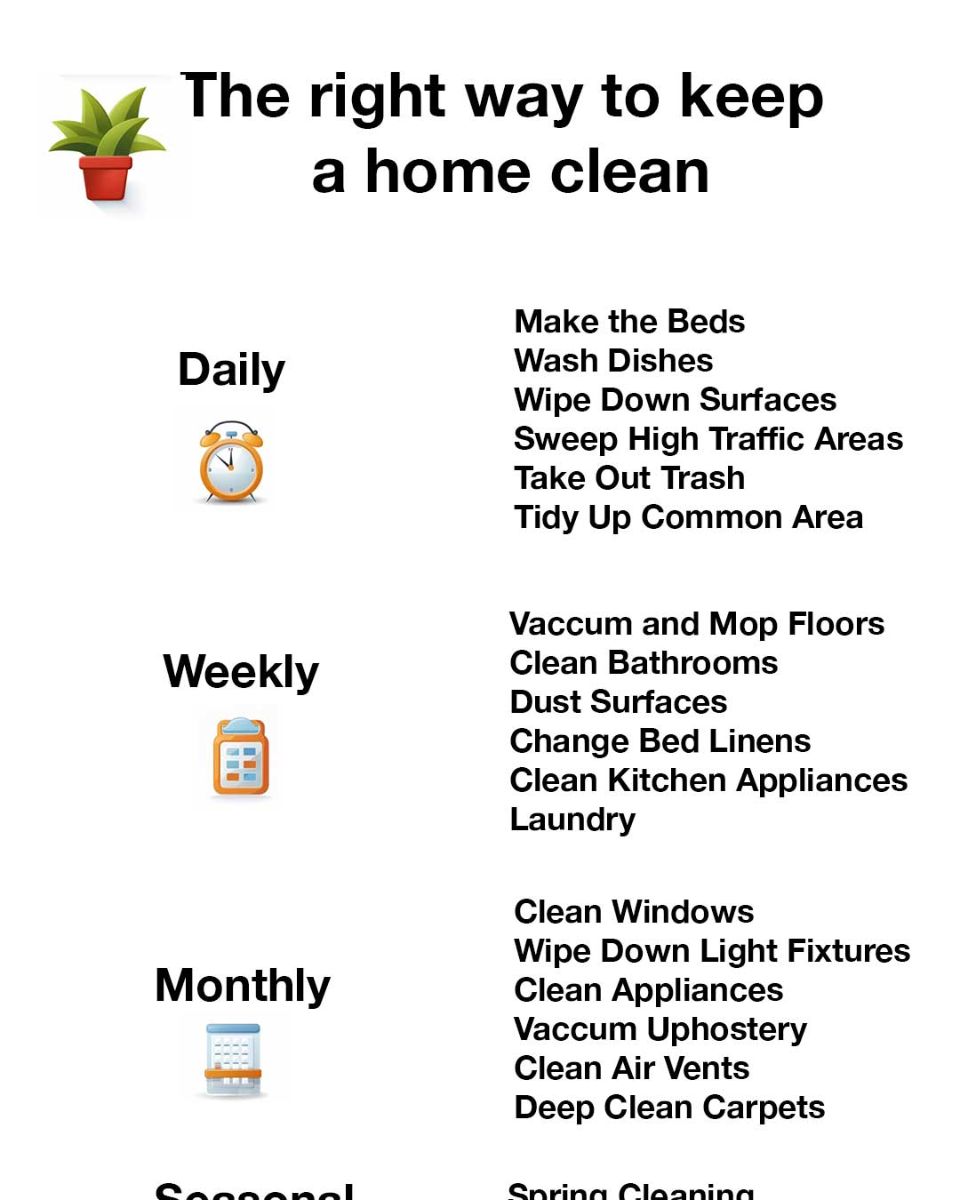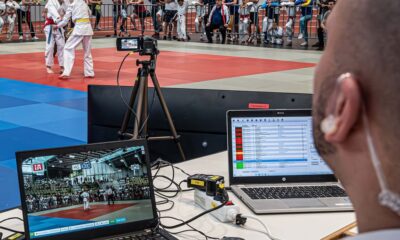Daily Cleaning Tasks
Daily cleaning tasks are essential for maintaining a baseline of cleanliness and preventing clutter from building up. These tasks typically take a few minutes to complete and make a big difference in the overall appearance and hygiene of your home.
Make the Beds: Start the day by making all the beds in the house. This instantly makes the rooms look tidier.
Wash Dishes: Clean dishes after every meal to prevent pile-ups and unpleasant odors.
Wipe Down Surfaces: Clean kitchen counters, dining tables, and bathroom sinks daily to remove crumbs, spills, and germs.
Sweep High-Traffic Areas: Sweep the kitchen, entryways, and living room floors to remove dirt and debris.
Take Out the Trash: Empty trash cans to prevent smells and pests.
Tidy Up Common Areas: Pick up toys, books, and other items that may be out of place in the living areas.
Weekly Cleaning Tasks
Weekly tasks involve deeper cleaning of areas that accumulate dirt and grime over time. These tasks ensure that your home stays clean and pleasant.
Vacuum and Mop Floors: Vacuum carpets and rugs, and mop hard floors to remove dust, dirt, and allergens.
Clean Bathrooms: Scrub toilets, sinks, showers, and bathtubs. Wipe down mirrors and clean bathroom floors.
Dust Surfaces: Dust furniture, shelves, baseboards, and other surfaces to keep them looking fresh and to reduce allergens.
Change Bed Linens: Replace bed sheets and pillowcases to maintain hygiene and freshness.
Clean Kitchen Appliances: Wipe down the exterior of kitchen appliances like the stove, microwave, and refrigerator.
Laundry: Do laundry regularly to ensure you always have clean clothes and linens.
Monthly Cleaning Tasks
Monthly cleaning tasks involve deeper cleaning and maintenance of areas that do not need daily or weekly attention but still require regular upkeep.
Clean Windows: Wash windows inside and out to remove dirt and streaks.
Wipe Down Light Fixtures and Ceiling Fans: Dust and wipe light fixtures and ceiling fans to prevent dust buildup.
Clean Inside Appliances: Clean the inside of the microwave, oven, and refrigerator to remove spills and crumbs.
Vacuum Upholstery: Vacuum sofas, chairs, and other upholstered furniture to remove dust and crumbs.
Clean Air Vents and Filters: Remove dust from air vents and replace HVAC filters to maintain good air quality.
Deep Clean Carpets and Rugs: Use a carpet cleaner or hire a professional to deep clean carpets and rugs.
Seasonal Cleaning Tasks
Seasonal cleaning tasks align with the changes in weather and help prepare your home for different seasons. These tasks are more extensive and ensure that your home is ready for the upcoming months.
Spring Cleaning:
Declutter and organize closets, drawers, and storage spaces. READ FULL STORY HERE>>>CLICK HERE TO CONTINUE READING>>>
Wash curtains and blinds.
Clean behind and under furniture.
Check and replace batteries in smoke detectors.
Summer Cleaning:
Clean and inspect outdoor furniture and grills.
Wash windows and screens.
Clean and organize the garage.
Service air conditioning units.
Fall Cleaning:
Clean gutters and downspouts.
Inspect and clean the chimney.
Deep clean carpets and upholstery.
Prepare the home for cooler weather by checking insulation and sealing gaps.
Winter Cleaning:
Clean and organize kitchen cabinets and pantry.
Wash and store summer bedding and clothing.
Inspect and clean the basement or attic.
Prepare emergency kits for winter weather.
Yearly Cleaning Tasks
Yearly cleaning tasks are major deep cleaning and maintenance activities that keep your home in top shape.
Deep Clean the Entire Home: Conduct a thorough deep cleaning of every room, including hard-to-reach places and seldom-used spaces.
Clean and Inspect the Roof: Check for any damage and clean off debris to prevent leaks and other issues.
Pressure Wash Exterior: Clean the exterior walls, driveway, and walkways to remove dirt and mildew.
Service HVAC System: Have a professional service your heating and cooling systems to ensure they are functioning efficiently.
Inspect and Maintain Plumbing: Check for leaks, clogs, and other plumbing issues, and make necessary repairs.
Pest Control: Schedule a yearly pest control service to prevent infestations.
The post You are doing it wrong. Here’s the right way to keep a home clean appeared first on Timeless Life.


 SPORTS11 months ago
SPORTS11 months ago
 IN-THE-NEWS6 months ago
IN-THE-NEWS6 months ago
 SPORTS10 months ago
SPORTS10 months ago
 SPORTS10 months ago
SPORTS10 months ago
 SPORTS11 months ago
SPORTS11 months ago
 IN-THE-NEWS6 months ago
IN-THE-NEWS6 months ago
 SPORTS10 months ago
SPORTS10 months ago
 SPORTS10 months ago
SPORTS10 months ago


